Trekking in the Indian Himalayas (pt 1) in Melbourne Diaries
- Jan. 30, 2014, 4:30 p.m.
- |
- Public
[Carried over from my earlier Open Diary Indian travel entries.]
The next few entries concern trekking in the Indian Himalayas, which are the slightly unfashionable middle spread of the grandest of all mountain ranges, between the superlative peaks in Nepal and the Pakistani high adrenalin K2 equivalents to the East. The region doesn’t match the Himalayas of ‘Into Thin Air’ or other adventure/disaster stories. In fact there isn’t even that much snow in the trekking season, with only the top few hundred metres having any snow at all, and what’s below them looks dusty and barren at first glance. But, being located in India, they also have a colour and style distinct from the more glacial peaks to their side, and are less overrun by tourists than the better known Everest and Annapurna trails in Nepal.
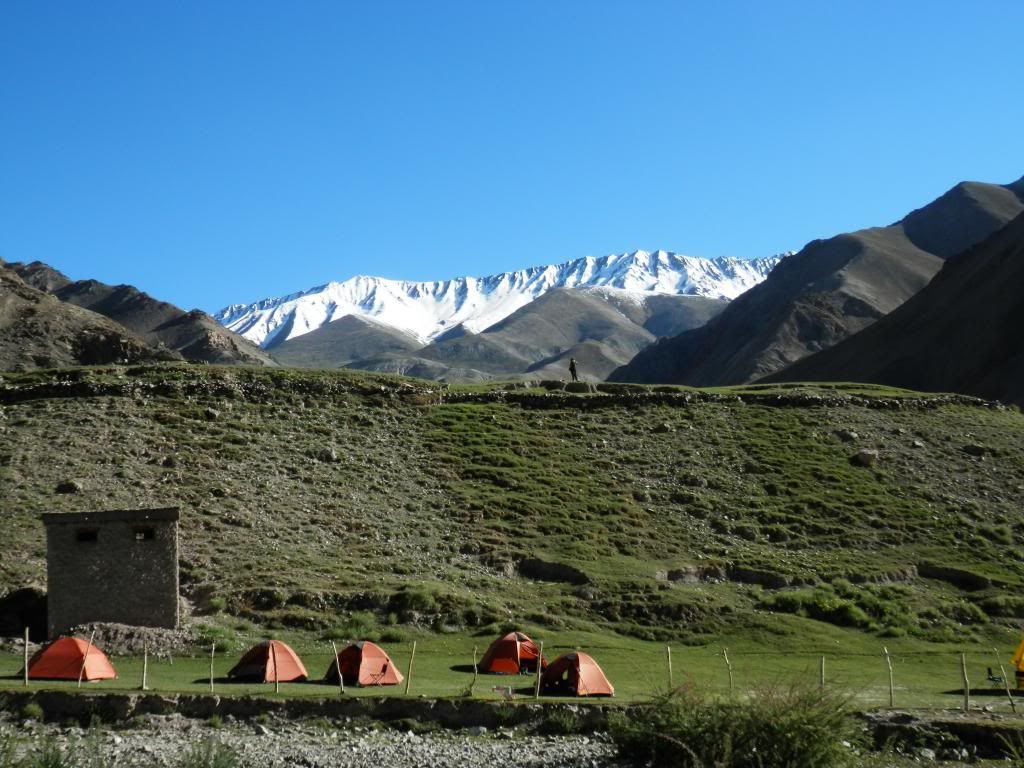 Rumbak campsite
Rumbak campsite
The trail we’re taking starts out on the relatively popular Markha Valley route in Ladakh, probably the most popular of the Indian Himalayan paths. It is a loosely circular route defined by two distinct ‘passes’ at around 5,000m high. If you’re not a mountaineer, the most difficult part of any Himalayan hike, the destinations that most define them, are the passes – they involve the most planning and are where the risks of altitude sickness and injury are most acute. Between those passes, though, are valleys dotted by small stone villages, crumbling nineteenth century forts built by long gone colonial regiments, and grazing clans of horses, goats and other cattle. There are also trekker facilities are regular intervals, small tents selling chai masala, instant noodles, toothpaste, warm (and unexpectedly strong) ‘Godfather’ beer, and even cigarettes (which are inhaled with surprising frequently by the European trekkers).
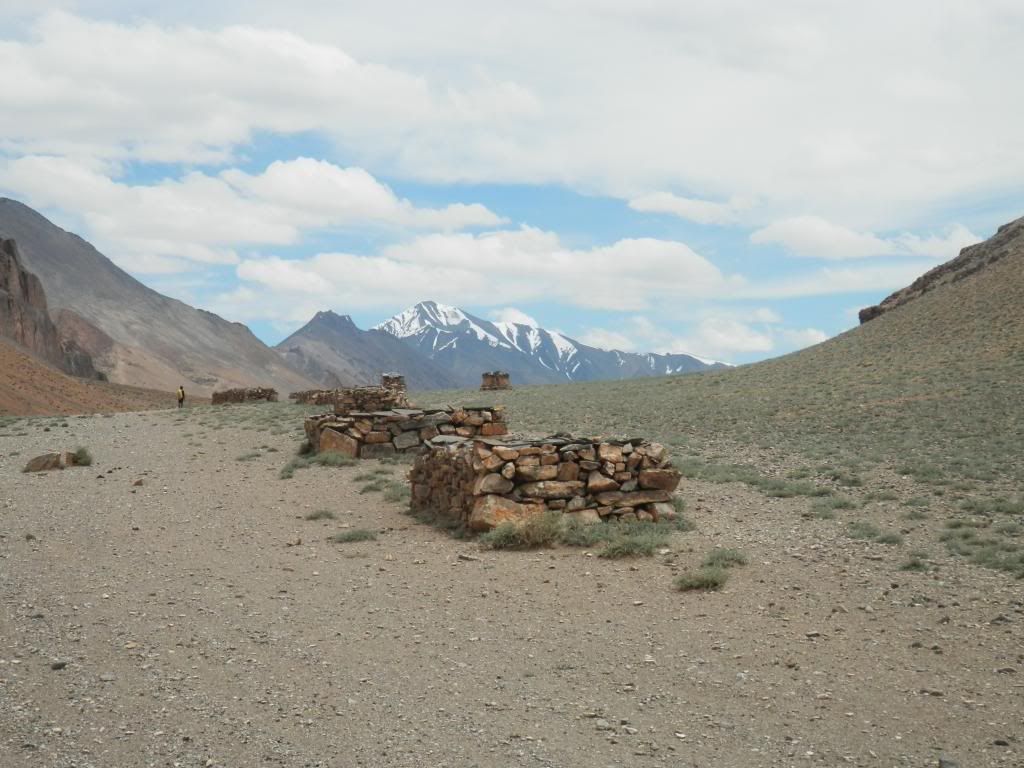 Prayer walls - Rumbak
Prayer walls - Rumbak
The most usual way to travel the Markha valley is to hire a guide in Leh, buy whatever equipment you didn’t bring with you at the local stores, and then lug the whole lot up the mountain passes one breathless step at a time. Ours is a more luxurious affair, as there are a team of horses to carry the heaviest tents and other equipment. This is overkill for me, as I’m still relatively healthy despite my advancing years, but is necessary for the other trekkers I’m, most of who have seen far better days physically and are achingly slow throughout the whole journey. I’m almost always the ‘lead’ hiker, and am only ever accompanied by Lopsang, a 19-year old guide who has returned from an ice hockey scholarship in Europe and is impressively fit. Compared to my Australian hikes, though, particularly the off-track stuff south of Canberra through head-high regrowth and lurking snakes, this is pretty easy physically.
[Lopsang is a thin boy with dark Nepalese features and a mop of thick black hair, Lopsang applied for an NHL scholarship, but the US authorities took one look at his ‘Kashmir’ residency on his passport and refused him entry. He ended up in Belgium and Germany, and describes his bewildered encounter with a German rave party.]
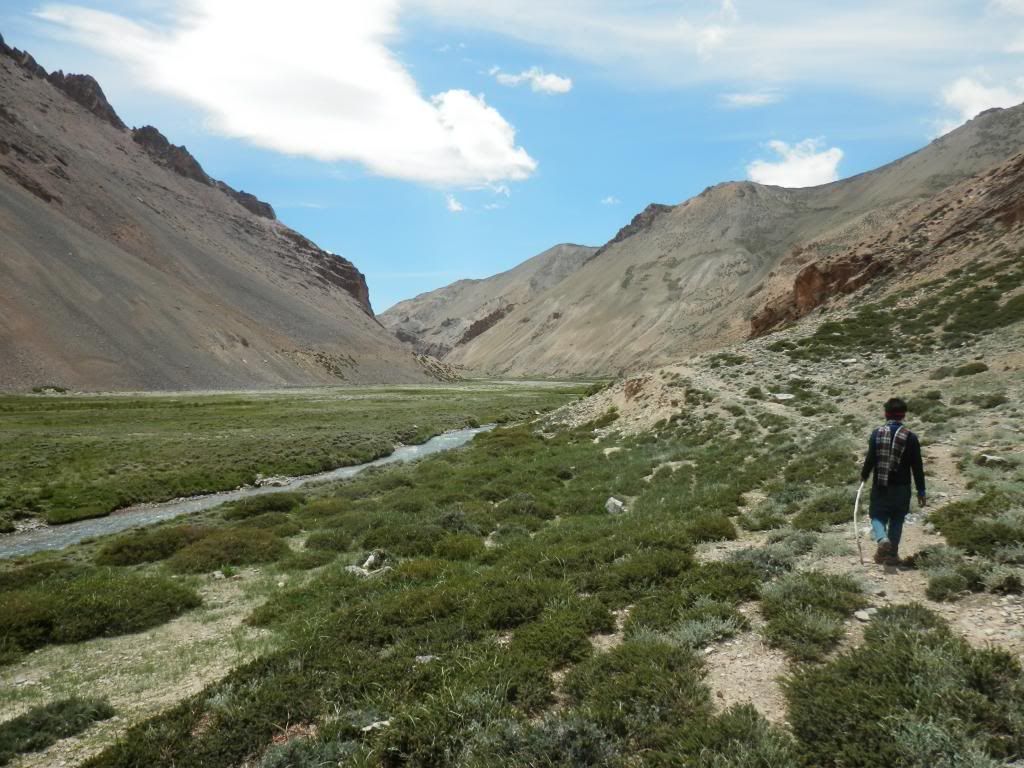 Lopsang
Lopsang
The first day is a short trip to the campsite at Rumbak, with the second day being a short detour into Stok and the adjacent Stok valley. The short distances are to enable altitude acclimatisation, which is no respecter of age or fitness. The terrain is largely a flat valley bisected by a subsidiary stream of the Zangskar river. This is supposedly prime bird-watching territory, but all I can find are the flightless partridge-like chukkas, which announce their presence through throaty clucks. Among the other trekking groups in this section, all of whom race past the Australian stragglers, are a group of genial, titanic-sized Germans (the smallest would be 6 foot 2 inches tall) and a petite tattooed French girl who couldn’t be older than 18 and is accompanied by a solitary local guide.
[This is something no Australian, British or American girl would do. French female tourists, I’ve noticed, seem entirely unaffected by the massive stigma India has incurred as a result of several rapes last year of female travellers, and are quite happy to wander around the country unaccompanied.]
The Rumbak campsite is at 4,000m altitude, and, at the intersection of the stream and two valleys flanking the Stok Kangri peak (6,123m), is the most impressive camp stop of the whole trip. Above it is a small soya bean field with a panoramic view of the valleys and nearby Rumbak township, and a beautiful outcrop – I spend about two hours photographing and videoing my surroundings, no longer irate about the first day involving so little exercise. The outlook improves even more when a herd of bharal, the wild blue sheep that is the food of the fabled snow leopard and the prey of travelling American gun nuts (banned in this region), stumble down the dirt hills to the stream I am washing myself in at sunset. On the opposite valley, a lone herder returns from his flock, a narrow cloth bag on his back, gingerly travelling along a narrow footpath carved just below a ridgeline, seeming like a messenger from a past age. I can understand now the appeal of the Himalayas, why so many risk their lives on the peaks and spend night after night in flimsy tents barely able to breathe. They are not just another set of big mountains – this is a landscape alien to anything in the Western world.
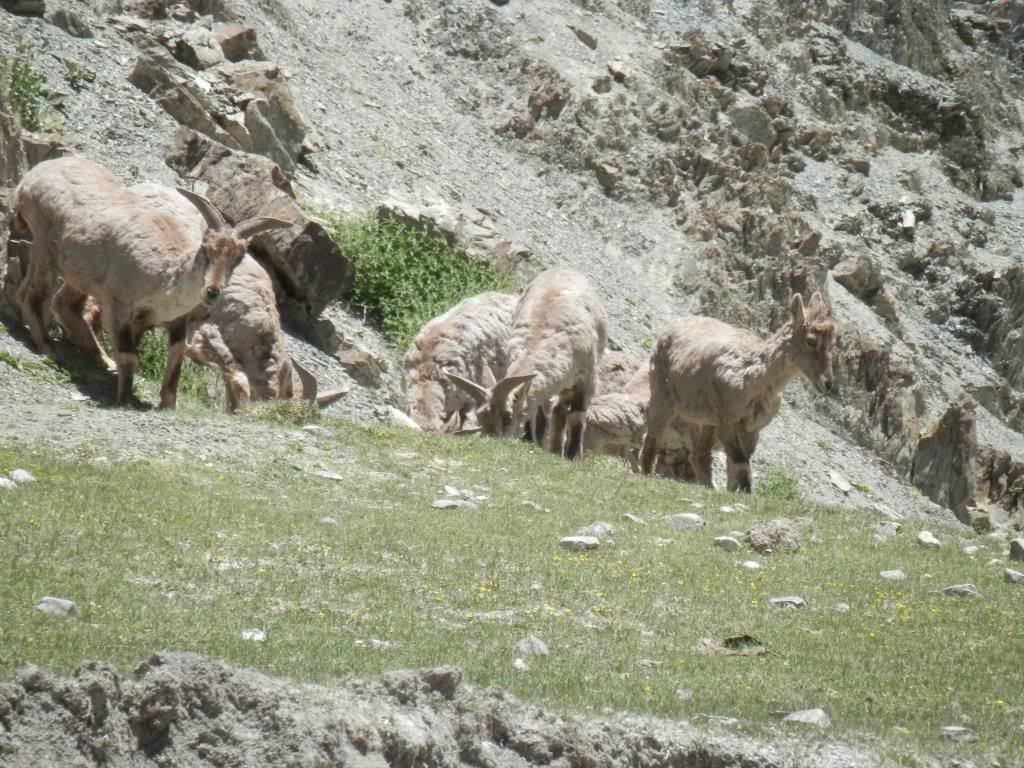 Himalayan blue sheep
Himalayan blue sheep
The next morning, a smaller group of us head off to Rumbak village. The villages and towns of the Markha valley are ramshackle affairs, consisting of mud and stone bricks thrown together into shaky walls, often topped with hay and flanked by Buddhist prayer flags. While they are farming communities, the residents also make a living by housing trekkers overnight for a few thousand rupees. Further on are the green enclosures for the village cows and small mani walls that must be passed from the left side.
[Mani walls are ‘prayer walls’, raised platforms beside roads and rivers onto which stone plates with the mantra ‘om mani padme hum’ (Hail to the jewel in the lotus) inscribed into them in the curly Ladakhi script, placed there over the years by devotional monks. The reason they must be passed on the left side is to imitate the clockwork direction by which Buddhism insists the Earth revolves.]
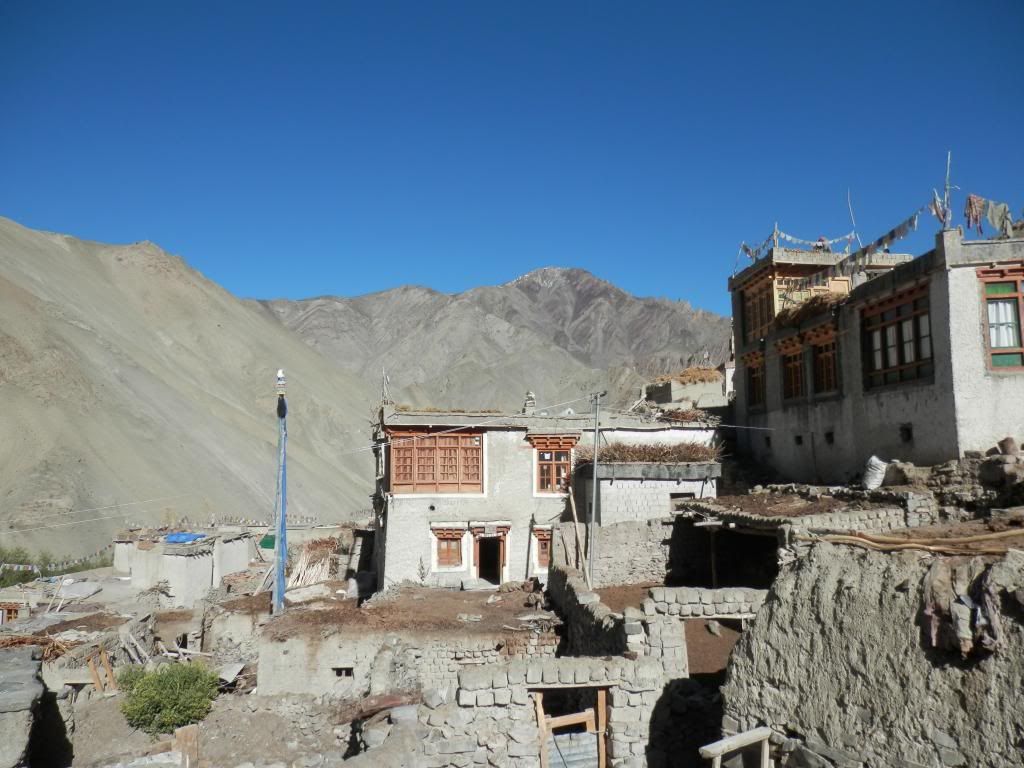 Rumbak town
Rumbak town
Further out from the Markha valley are three South Korean hikers, led by an arrogant, insufferable man in his thirties who spends much at his time shouting at the two young women behind them. One of the women seems to be in a serious amount of pain, and may be suffering from altitude sickness (potentially fatal in this region). The man’s response to this seems to be shout even louder, as though beat a mule on its backside. They are heading up the Stok pass, a brutal zigzag track up to a thin ridgeline that we are mercifully retreating, and at 4PM they are way behind schedule and will not get across it before nightfall. With my super-zoom camera, purchased to spy on distant wildlife, I later mark out their progress up the Stok pass from the valley, able to see the shadow of the man turning around to yell at the two girls several yards behind him. I’ve written in earlier OD entries about the passive aggressive, macho, peculiarities of Korean male hikers, and this lot fit the stereotype. On the way back to camp, our guide points out a hovering Golden Eagle flitting above the ridges, the number one avian predator in this region.
The next morning, with the full moon creeping above the V-shaped intersection of two mountain ridges, it is cold... very cold. The morning ritual here is be woken up by a guide with a complementary chai masala, wash yourself in a small bowl of ice cold stream water, hurriedly dress in as many layers as clothing as possible (if you weren’t wearing those layers in your sleeping bag to begin with), clean your teeth just as hurriedly and then stomp around aimlessly to keep warm. But as soon as the encroaching sunlight creeps down the hills and into the campsite, the temperature raises by 20 degrees instantly, the layers of clothing dropping from your body. You then check your pack for rips or holes, prep the trekking poles and heading off into the valley trails for another day.
 Moon at early morning
Moon at early morning



No comments.